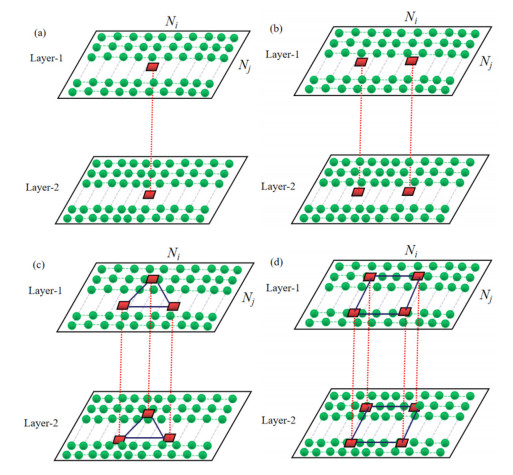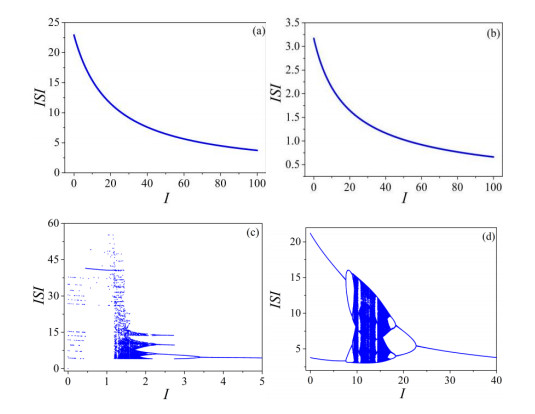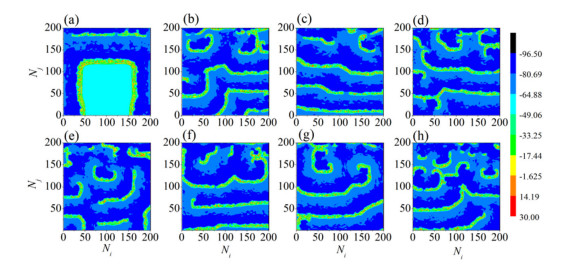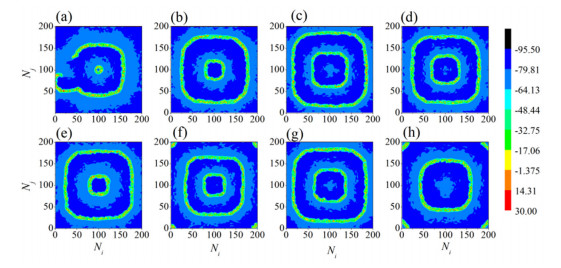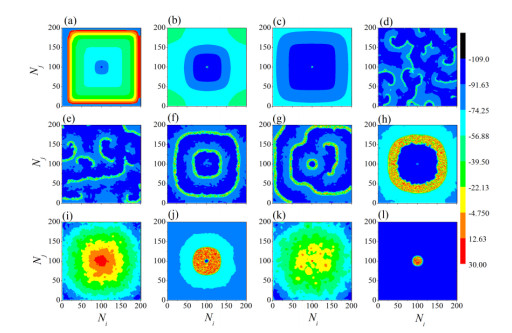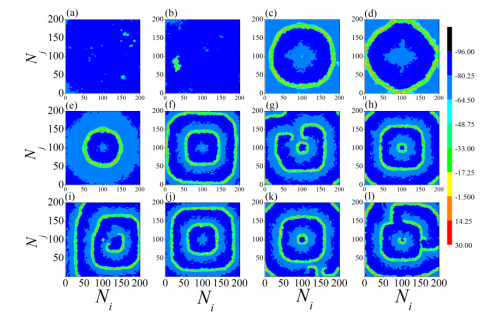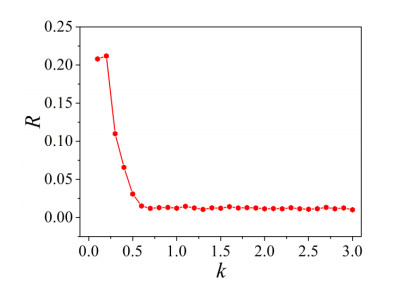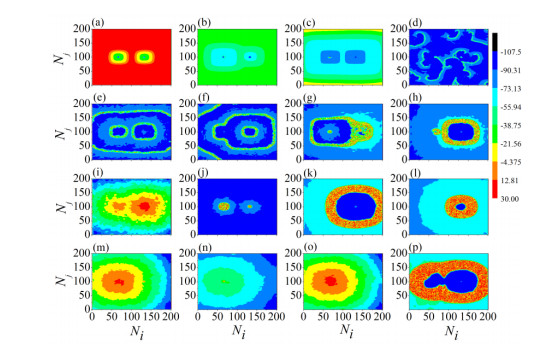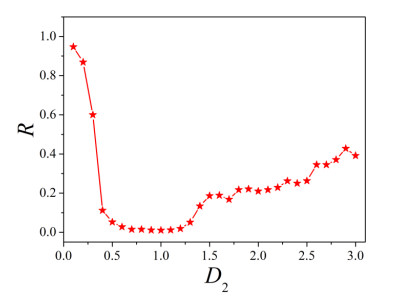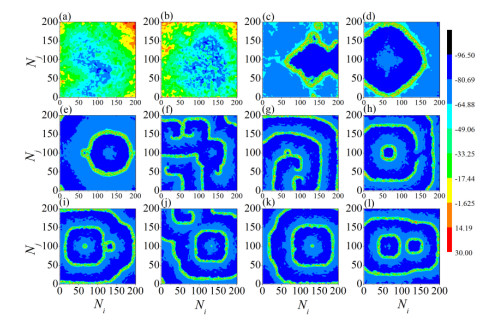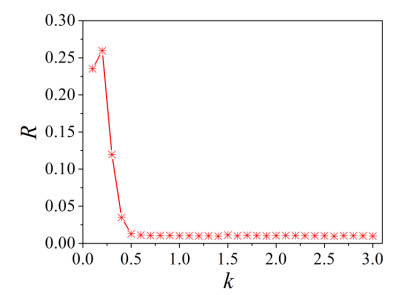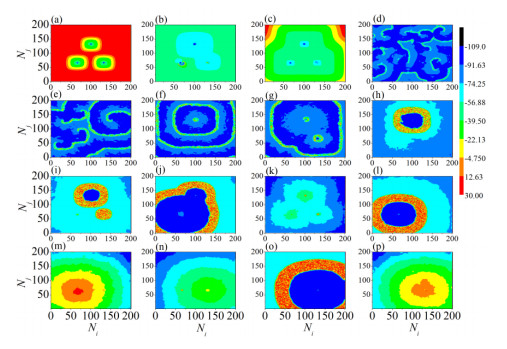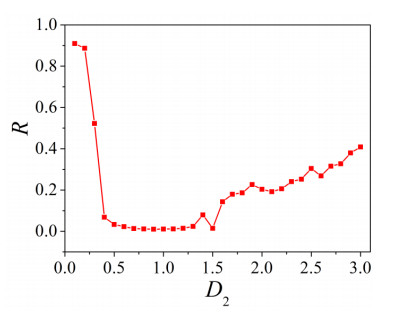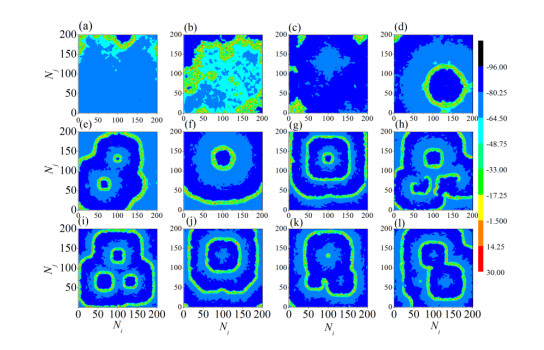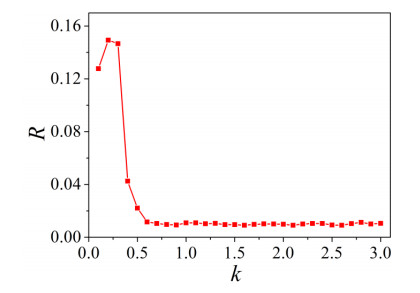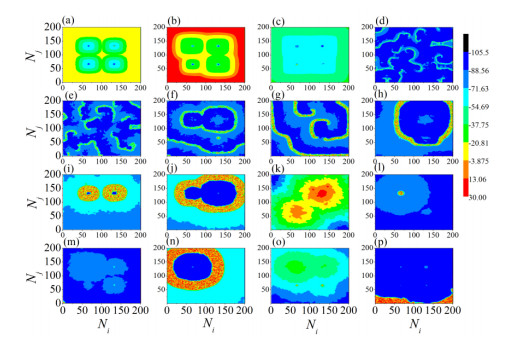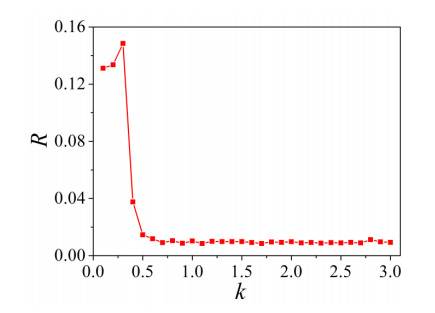|
[1]
|
N. Zhang, M. Wang, N. Wang, Precision agriculture—a worldwide overview, Comput. Electron. Agric., 36 (2002), 113–132. https://doi.org/10.1016/S0168-1699(02)00096-0 doi: 10.1016/S0168-1699(02)00096-0

|
|
[2]
|
K. H. Coble, A. K. Mishra, S. Ferrell, T. Griffin, Big data in agriculture: A challenge for the future, Appl. Econ. Perspect. Policy, 40 (2018), 79–96. https://doi.org/10.1093/aepp/ppx056 doi: 10.1093/aepp/ppx056

|
|
[3]
|
A.-K. Mahlein, Plant disease detection by imaging sensors–parallels and specific demands for precision agriculture and plant phenotyping, Plant Dis., 100 (2016), 241–251. https://doi.org/10.1094/PDIS-03-15-0340-FE doi: 10.1094/PDIS-03-15-0340-FE

|
|
[4]
|
J. C. Koh, M. Hayden, H. Daetwyler, S. Kant, Estimation of crop plant density at early mixed growth stages using UAV imagery, Plant Methods, 15 (2019), 1–9. https://doi.org/10.1186/s13007-019-0449-1 doi: 10.1186/s13007-019-0449-1

|
|
[5]
|
D. Sinwar, V. S. Dhaka, M. K. Sharma, G. Rani, AI-based yield prediction and smart irrigation. Internet of Things and Analytics for Agriculture, Volume 2: Springer. (2020), 155–180. https://doi.org/10.1007/978-981-15-0663-5_8
|
|
[6]
|
A. Al-Naji, A. B. Fakhri, S. K. Gharghan, J. Chahl, Soil color analysis based on a RGB camera and an artificial neural network towards smart irrigation: A pilot study, Heliyon, 7 (2021), e06078. https://doi.org/10.1016/j.heliyon.2021.e06078 doi: 10.1016/j.heliyon.2021.e06078

|
|
[7]
|
M. Kerkech, A. Hafiane, R. Canals, Deep leaning approach with colorimetric spaces and vegetation indices for vine diseases detection in UAV images, Comput. Electron. Agric., 155 (2018), 237–243. https://doi.org/10.1016/j.compag.2018.10.006 doi: 10.1016/j.compag.2018.10.006

|
|
[8]
|
C.-J. Chen, Y.-Y. Huang, Y.-S. Li, Y.-C. Chen, C.-Y. Chang, Y.-M. Huang, Identification of fruit tree pests with deep learning on embedded drone to achieve accurate pesticide spraying, IEEE Access, 9 (2021), 21986–21997. https://doi.org/10.1109/ACCESS.2021.3056082 doi: 10.1109/ACCESS.2021.3056082

|
|
[9]
|
R. P. Sishodia, R. L. Ray, S. K. Singh, Applications of remote sensing in precision agriculture: A review, Remote Sens., 12 (2020), 3136. https://doi.org/10.3390/rs12193136 doi: 10.3390/rs12193136

|
|
[10]
|
C. Vallentin, K. Harfenmeister, S. Itzerott, B. Kleinschmit, C. Conrad, D. Spengler, Suitability of satellite remote sensing data for yield estimation in northeast Germany, Precis. Agric., 23 (2022), 52–82. https://doi.org/10.1007/s11119-021-09827-6 doi: 10.1007/s11119-021-09827-6

|
|
[11]
|
A. Khaliq, L. Comba, A. Biglia, D. R. Aimonino, M. Chiaberge, P. Gay, Comparison of satellite and UAV-based multispectral imagery for vineyard variability assessment, Remote Sens., 11 (2019), 436. https://doi.org/10.3390/rs11040436 doi: 10.3390/rs11040436

|
|
[12]
|
P. Radoglou-Grammatikis, P. Sarigiannidis, T. Lagkas, I. Moscholios, A compilation of UAV applications for precision agriculture, Comput. Netw., 172 (2020), 107148. https://doi.org/10.1016/j.comnet.2020.107148 doi: 10.1016/j.comnet.2020.107148

|
|
[13]
|
I. Luna, A. Lobo, Mapping crop planting quality in sugarcane from UAV imagery: A pilot study in Nicaragua, Remote Sens., 8 (2016), 500. https://doi.org/10.3390/rs8060500 doi: 10.3390/rs8060500

|
|
[14]
|
M. D. Bah, A. Hafiane, R. Canals, Deep learning with unsupervised data labeling for weed detection in line crops in UAV images, Remote Sens., 10 (2018), 1690. https://doi.org/10.3390/rs10111690 doi: 10.3390/rs10111690

|
|
[15]
|
B. Mishra, A. Dahal, N. Luintel, T. B. Shahi, S. Panthi, S. Pariyar, et al., Methods in the spatial deep learning: current status and future direction, Spat. Inform. Res., 30 (2022), 215–232. https://doi.org/10.1007/s41324-021-00425-2 doi: 10.1007/s41324-021-00425-2

|
|
[16]
|
J. Geipel, J. Link, W. Claupein, Combined spectral and spatial modeling of corn yield based on aerial images and crop surface models acquired with an unmanned aircraft system, Remote Sens., 6 (2014), 10335–10355. https://doi.org/10.3390/rs61110335 doi: 10.3390/rs61110335

|
|
[17]
|
X. Zhou, H. Zheng, X. Xu, J. He, X. Ge, X. Yao, et al., Predicting grain yield in rice using multi-temporal vegetation indices from UAV-based multispectral and digital imagery, ISPRS J. Photogramm., 130 (2017), 246–255. https://doi.org/10.1016/j.isprsjprs.2017.05.003 doi: 10.1016/j.isprsjprs.2017.05.003

|
|
[18]
|
N. Yu, L. Li, N. Schmitz, L. F. Tian, J. A. Greenberg, B. W. Diers, Development of methods to improve soybean yield estimation and predict plant maturity with an unmanned aerial vehicle based platform, Remote Sens. Environ., 187 (2016), 91–101. https://doi.org/10.1016/j.rse.2016.10.005 doi: 10.1016/j.rse.2016.10.005

|
|
[19]
|
F. Gnädinger, U. Schmidhalter, Digital counts of maize plants by unmanned aerial vehicles (UAVs), Remote sens., 9 (2017), 544. https://doi.org/10.3390/rs9060544 doi: 10.3390/rs9060544

|
|
[20]
|
S. Nebiker, N. Lack, M. Abächerli, S. Läderach, Light-weight multispectral UAV sensors and their capabilities for predicting grain yield and detecting plant diseases, Int. Archives Photogrammetry, Remote Sens. Spatial Inf. Sci., 41 (2016). https://doi.org/10.5194/isprsarchives-XLI-B1-963-2016 doi: 10.5194/isprsarchives-XLI-B1-963-2016

|
|
[21]
|
M. Maimaitijiang, V. Sagan, P. Sidike, S. Hartling, F. Esposito, F. B. Fritschi, Soybean yield prediction from UAV using multimodal data fusion and deep learning, Remote Sens. Environ., 237 (2020), 111599. https://doi.org/10.1016/j.rse.2019.111599 doi: 10.1016/j.rse.2019.111599

|
|
[22]
|
P. Nevavuori, N. Narra, P. Linna, T. Lipping, Crop yield prediction using multitemporal UAV data and spatio-temporal deep learning models, Remote Sens., 12 (2020), 4000. https://doi.org/10.3390/rs12234000 doi: 10.3390/rs12234000

|
|
[23]
|
J. Abdulridha, Y. Ampatzidis, J. Qureshi, P. Roberts, Laboratory and UAV-based identification and classification of tomato yellow leaf curl, bacterial spot, and target spot diseases in tomato utilizing hyperspectral imaging and machine learning, Remote Sens., 12 (2020), 2732. https://doi.org/10.3390/rs12172732 doi: 10.3390/rs12172732

|
|
[24]
|
M. Bhandari, A. M. Ibrahim, Q. Xue, J. Jung, A. Chang, J. C. Rudd, et al., Assessing winter wheat foliage disease severity using aerial imagery acquired from small Unmanned Aerial Vehicle (UAV), Comput. Electron. Agric., 176 (2020), 105665. https://doi.org/10.1016/j.compag.2020.105665 doi: 10.1016/j.compag.2020.105665

|
|
[25]
|
W. H. Maes, K. Steppe, Perspectives for remote sensing with unmanned aerial vehicles in precision agriculture, Trends Plant Sci., 24 (2019), 152–164. https://doi.org/10.1016/j.tplants.2018.11.007 doi: 10.1016/j.tplants.2018.11.007

|
|
[26]
|
A. Chlingaryan, S. Sukkarieh, B. Whelan, Machine learning approaches for crop yield prediction and nitrogen status estimation in precision agriculture: A review, Comput. Electron. Agric., 151 (2018), 61–69. https://doi.org/10.1016/j.compag.2018.05.012 doi: 10.1016/j.compag.2018.05.012

|
|
[27]
|
D. C. Tsouros, S. Bibi, P. G. Sarigiannidis, A review on UAV-based applications for precision agriculture, Information, 10 (2019), 349. https://doi.org/10.3390/info10110349 doi: 10.3390/info10110349

|
|
[28]
|
P. Velusamy, S. Rajendran, R. K. Mahendran, S. Naseer, M. Shafiq, J.-G. Choi, Unmanned Aerial Vehicles (UAV) in Precision Agriculture: Applications and Challenges, Energies, 15 (2021), 217. https://doi.org/10.3390/en15010217 doi: 10.3390/en15010217

|
|
[29]
|
A. Kamilaris, F. X. Prenafeta-Boldú, Deep learning in agriculture: A survey, Comput. Electron. Agric., 147 (2018), 70–90. https://doi.org/10.1016/j.compag.2018.02.016 doi: 10.1016/j.compag.2018.02.016

|
|
[30]
|
D. J. Mulla, Twenty five years of remote sensing in precision agriculture: Key advances and remaining knowledge gaps, Biosyst. Eng., 114 (2013), 358–371. https://doi.org/10.1016/j.biosystemseng.2012.08.009 doi: 10.1016/j.biosystemseng.2012.08.009

|
|
[31]
|
A. Mancini, E. Frontoni, P. Zingaretti. Satellite and uav data for precision agriculture applications; 2019. IEEE. pp. 491–497. https://doi.org/10.1109/ICUAS.2019.8797930
|
|
[32]
|
U. S. Panday, N. Shrestha, S. Maharjan, A. K. Pratihast, K. L. Shrestha, J. Aryal, Correlating the Plant Height of Wheat with Above-Ground Biomass and Crop Yield Using Drone Imagery and Crop Surface Model, A Case Study from Nepal, Drones, 4 (2020), 28. https://doi.org/10.3390/drones4030028 doi: 10.3390/drones4030028

|
|
[33]
|
I. H. Beloev, A review on current and emerging application possibilities for unmanned aerial vehicles, Acta Technol. Agric., 19 (2016), 70–76. https://doi.org/10.1515/ata-2016-0015 doi: 10.1515/ata-2016-0015

|
|
[34]
|
R. Gebbers, V. I. Adamchuk, Precision agriculture and food security, Science, 327 (2010), 828–831. https://doi.org/10.1126/science.1183899 doi: 10.1126/science.1183899

|
|
[35]
|
J. L. Awange, J. B. Kyalo Kiema, Fundamentals of remote sensing. Environmental Geoinformatis. Springer, Berlin, Heidelberg, 2013,111–118. https://doi.org/10.1007/978-3-642-34085-7_7
|
|
[36]
|
T. Chen, W. Yang, H. Zhang, B. Zhu, R. Zeng, X. Wang, et al., Early detection of bacterial wilt in peanut plants through leaf-level hyperspectral and unmanned aerial vehicle data, Comput. Electron. Agric., 177 (2020), 105708. https://doi.org/10.1016/j.compag.2020.105708 doi: 10.1016/j.compag.2020.105708

|
|
[37]
|
C. Albornoz, L. F. Giraldo, Trajectory design for efficient crop irrigation with a UAV, 2017 IEEE 3rd Colombian conference on Automatic Control (CCAC), IEEE, 2017. pp. 1–6. https://doi.org/10.1109/CCAC.2017.8276401
|
|
[38]
|
V. Gonzalez-Dugo, P. Zarco-Tejada, E. Nicolás, P. A. Nortes, J. Alarcón, D. S. Intrigliolo, et al., Using high resolution UAV thermal imagery to assess the variability in the water status of five fruit tree species within a commercial orchard, Precis. Agric., 14 (2013), 660–678. https://doi.org/10.1007/s11119-013-9322-9 doi: 10.1007/s11119-013-9322-9

|
|
[39]
|
Y. Huang, K. N. Reddy, R. S. Fletcher, D. Pennington, UAV low-altitude remote sensing for precision weed management, Weed Technol., 32 (2018), 2–6. https://doi.org/10.1017/wet.2017.89 doi: 10.1017/wet.2017.89

|
|
[40]
|
C. Ballester, J. Brinkhoff, W. C. Quayle, J. Hornbuckle, Monitoring the effects of water stress in cotton using the green red vegetation index and red edge ratio, Remote Sens., 11 (2019), 873. https://doi.org/10.3390/rs11070873 doi: 10.3390/rs11070873

|
|
[41]
|
L. Zhang, H. Zhang, Y. Niu, W. Han, Mapping maize water stress based on UAV multispectral remote sensing, Remote Sens., 11 (2019), 605. https://doi.org/10.3390/rs11060605 doi: 10.3390/rs11060605

|
|
[42]
|
E. R. Hunt, D. A. Horneck, C. B. Spinelli, R. W. Turner, A. E. Bruce, D. J. Gadler, et al., Monitoring nitrogen status of potatoes using small unmanned aerial vehicles, Precis. Agric., 19 (2018), 314–333. https://doi.org/10.1007/s11119-017-9518-5 doi: 10.1007/s11119-017-9518-5

|
|
[43]
|
J. Kim, S. Kim, C. Ju, H. I. Son, Unmanned aerial vehicles in agriculture: A review of perspective of platform, control, and applications, IEEE Access, 7 (2019), 105100–105115. https://doi.org/10.1109/ACCESS.2019.2932119 doi: 10.1109/ACCESS.2019.2932119

|
|
[44]
|
R. Akhter, S. A. Sofi, Precision agriculture using IoT data analytics and machine learning, J. King Saud University-Comput. Inform. Sci., (2021). https://doi.org/10.1016/j.jksuci.2021.05.013 doi: 10.1016/j.jksuci.2021.05.013

|
|
[45]
|
L. Pádua, J. Vanko, J. Hruška, T. Adão, J. J. Sousa, E. Peres, et al., UAS, sensors, and data processing in agroforestry: A review towards practical applications, Int. J. Remote Sens., 38 (2017), 2349–2391. https://doi.org/10.1080/01431161.2017.1297548 doi: 10.1080/01431161.2017.1297548

|
|
[46]
|
C. Paucar, L. Morales, K. Pinto, M. Sánchez, R. Rodríguez, M. Gutierrez, et al., Use of drones for surveillance and reconnaissance of military areas; 2018. Springer. pp. 119–132. https://doi.org/10.1007/978-3-319-78605-6_10
|
|
[47]
|
I. Wahab, O. Hall, M. Jirström, Remote sensing of yields: Application of uav imagery-derived ndvi for estimating maize vigor and yields in complex farming systems in sub-saharan africa, Drones, 2 (2018), 28. https://doi.org/10.3390/drones2030028 doi: 10.3390/drones2030028

|
|
[48]
|
M. Zaman-Allah, O. Vergara, J. Araus, A. Tarekegne, C. Magorokosho, P. Zarco-Tejada, et al., Unmanned aerial platform-based multi-spectral imaging for field phenotyping of maize, Plant Methods, 11 (2015), 1–10. https://doi.org/10.1186/s13007-015-0078-2 doi: 10.1186/s13007-015-0078-2

|
|
[49]
|
A. C. Watts, V. G. Ambrosia, E. A. Hinkley, Unmanned aircraft systems in remote sensing and scientific research: Classification and considerations of use, Remote Sens., 4 (2012), 1671–1692. https://doi.org/10.3390/rs4061671 doi: 10.3390/rs4061671

|
|
[50]
|
S. Guan, K. Fukami, H. Matsunaka, M. Okami, R. Tanaka, H. Nakano, et al., Assessing correlation of high-resolution NDVI with fertilizer application level and yield of rice and wheat crops using small UAVs, Remote Sens., 11 (2019), 112. https://doi.org/10.3390/rs11020112 doi: 10.3390/rs11020112

|
|
[51]
|
X. Zhang, L. Han, Y. Dong, Y. Shi, W. Huang, L. Han, et al., A deep learning-based approach for automated yellow rust disease detection from high-resolution hyperspectral UAV images, Remote Sens., 11 (2019), 1554. https://doi.org/10.3390/rs11131554 doi: 10.3390/rs11131554

|
|
[52]
|
G. Oré, M. S. Alcântara, J. A. Góes, L. P. Oliveira, J. Yepes, B. Teruel, et al., Crop growth monitoring with drone-borne DInSAR, Remote Sens., 12 (2020), 615. https://doi.org/10.3390/rs12040615 doi: 10.3390/rs12040615

|
|
[53]
|
A. Matese, R. Baraldi, A. Berton, C. Cesaraccio, S. F. Di Gennaro, P. Duce, et al., Estimation of water stress in grapevines using proximal and remote sensing methods, Remote Sens., 10 (2018), 114. https://doi.org/10.3390/rs10010114 doi: 10.3390/rs10010114

|
|
[54]
|
A. P. M. Ramos, L. P. Osco, D. E. G. Furuya, W. N. Gonçalves, D. C. Santana, L. P. R. Teodoro, et al., A random forest ranking approach to predict yield in maize with uav-based vegetation spectral indices, Comput. Electron. Agric., 178 (2020), 105791. https://doi.org/10.1016/j.compag.2020.105791 doi: 10.1016/j.compag.2020.105791

|
|
[55]
|
L. Wan, H. Cen, J. Zhu, J. Zhang, Y. Zhu, D. Sun, et al., Grain yield prediction of rice using multi-temporal UAV-based RGB and multispectral images and model transfer–a case study of small farmlands in the South of China, Agric. For. Meteorol., 291 (2020), 108096. https://doi.org/10.1016/j.agrformet.2020.108096 doi: 10.1016/j.agrformet.2020.108096

|
|
[56]
|
A. Matese, S. F. Di Gennaro, Beyond the traditional NDVI index as a key factor to mainstream the use of UAV in precision viticulture, Sci. Rep., 11 (2021), 1–13. https://doi.org/10.1038/s41598-021-81652-3 doi: 10.1038/s41598-021-81652-3

|
|
[57]
|
K. Sumesh, S. Ninsawat, J. Som-ard, Integration of RGB-based vegetation index, crop surface model and object-based image analysis approach for sugarcane yield estimation using unmanned aerial vehicle, Comput. Electron. Agric., 180 (2021), 105903. https://doi.org/10.1016/j.compag.2020.105903 doi: 10.1016/j.compag.2020.105903

|
|
[58]
|
C. Stanton, M. J. Starek, N. Elliott, M. Brewer, M. M. Maeda, T. Chu, Unmanned aircraft system-derived crop height and normalized difference vegetation index metrics for sorghum yield and aphid stress assessment, J. Appl. Remote Sens., 11 (2017), 026035. https://doi.org/10.1117/1.JRS.11.026035 doi: 10.1117/1.JRS.11.026035

|
|
[59]
|
P. L. Raeva, J. Šedina, A. Dlesk, Monitoring of crop fields using multispectral and thermal imagery from UAV, Eur. J. Remote Sens., 52 (2019), 192–201. https://doi.org/10.1080/22797254.2018.1527661 doi: 10.1080/22797254.2018.1527661

|
|
[60]
|
L. G. T. Crusiol, M. R. Nanni, R. H. Furlanetto, R. N. R. Sibaldelli, E. Cezar, L. M. Mertz-Henning, et al., UAV-based thermal imaging in the assessment of water status of soybean plants, Int. J. Remote Sens., 41 (2020), 3243–3265. https://doi.org/10.1080/01431161.2019.1673914 doi: 10.1080/01431161.2019.1673914

|
|
[61]
|
I. Pölönen, H. Saari, J. Kaivosoja, E. Honkavaara, L. Pesonen, Hyperspectral imaging based biomass and nitrogen content estimations from light-weight UAV, Remote Sensing for Agriculture, Ecosystems, and Hydrology XV. SPIE, 8887 (2013), 141–149. https://doi.org/10.1117/12.2028624
|
|
[62]
|
C. N. Vong, L. S. Conway, J. Zhou, N. R. Kitchen, K. A. Sudduth, Early corn stand count of different cropping systems using UAV-imagery and deep learning, Comput. Electron. Agric., 186 (2021), 106214. https://doi.org/10.1016/j.compag.2021.106214 doi: 10.1016/j.compag.2021.106214

|
|
[63]
|
U. Lussem, A. Bolten, M. Gnyp, J. Jasper, G. Bareth, Evaluation of RGB-based vegetation indices from UAV imagery to estimate forage yield in grassland, Int. Arch. Photogramm Remote Sens. Spatial Inf. Sci., 42 (2018), 1215–1219. https://doi.org/10.5194/isprs-archives-XLII-3-1215-2018 doi: 10.5194/isprs-archives-XLII-3-1215-2018

|
|
[64]
|
R. V. Rossel, R. McGlynn, A. McBratney, Determining the composition of mineral-organic mixes using UV–vis–NIR diffuse reflectance spectroscopy, Geoderma, 137 (2006), 70–82. https://doi.org/10.1016/j.geoderma.2006.07.004 doi: 10.1016/j.geoderma.2006.07.004

|
|
[65]
|
Y. Guo, H. Wang, Z. Wu, S. Wang, H. Sun, J. Senthilnath, et al., Modified Red Blue Vegetation Index for Chlorophyll Estimation and Yield Prediction of Maize from Visible Images Captured by UAV, Sensors, 20 (2020), 5055. https://doi.org/10.3390/s20185055 doi: 10.3390/s20185055

|
|
[66]
|
H. García-Martínez, H. Flores-Magdaleno, R. Ascencio-Hernández, A. Khalil-Gardezi, L. Tijerina-Chávez, O. R. Mancilla-Villa, et al., Corn grain yield estimation from vegetation indices, canopy cover, plant density, and a neural network using multispectral and RGB images acquired with unmanned aerial vehicles, Agriculture, 10 (2020), 277. https://doi.org/10.3390/agriculture10070277 doi: 10.3390/agriculture10070277

|
|
[67]
|
T. Adão, J. Hruška, L. Pádua, J. Bessa, E. Peres, R. Morais, et al., Hyperspectral imaging: A review on UAV-based sensors, data processing and applications for agriculture and forestry, Remote Sens., 9 (2017), 1110. https://doi.org/10.3390/rs9111110 doi: 10.3390/rs9111110

|
|
[68]
|
R. Calderón, J. A. Navas-Cortés, C. Lucena, P. J. Zarco-Tejada, High-resolution airborne hyperspectral and thermal imagery for early detection of Verticillium wilt of olive using fluorescence, temperature and narrow-band spectral indices, Remote Sens. Environ., 139 (2013), 231–245. https://doi.org/10.1016/j.rse.2013.07.031 doi: 10.1016/j.rse.2013.07.031

|
|
[69]
|
J. Su, C. Liu, M. Coombes, X. Hu, C. Wang, X. Xu, et al., Wheat yellow rust monitoring by learning from multispectral UAV aerial imagery, Comput. Electron. Agric., 155 (2018), 157–166. https://doi.org/10.1016/j.compag.2018.10.017 doi: 10.1016/j.compag.2018.10.017

|
|
[70]
|
J. Kurihara, T. Ishida, Y. Takahashi, Unmanned Aerial Vehicle (UAV)-based hyperspectral imaging system for precision agriculture and forest management, In Unmanned Aerial Vehicle: Applications in Agriculture and Environment, Springer. (2020), 25–38. https://doi.org/10.1007/978-3-030-27157-2_3
|
|
[71]
|
J. Bian, Z. Zhang, J. Chen, H. Chen, C. Cui, X. Li, et al., Simplified evaluation of cotton water stress using high resolution unmanned aerial vehicle thermal imagery, Remonte Sens., 11 (2019), 267. https://doi.org/10.3390/rs11030267 doi: 10.3390/rs11030267

|
|
[72]
|
J. Martínez, G. Egea, J. Agüera, M. Pérez-Ruiz, A cost-effective canopy temperature measurement system for precision agriculture: A case study on sugar beet, Precis. Agric., 18 (2017), 95–110. https://doi.org/10.1007/s11119-016-9470-9 doi: 10.1007/s11119-016-9470-9

|
|
[73]
|
L. Zhang, Y. Niu, H. Zhang, W. Han, G. Li, J. Tang, et al., Maize canopy temperature extracted from UAV thermal and RGB imagery and its application in water stress monitoring, Front. Plant Sci., (2019), 1270. https://doi.org/10.3389/fpls.2019.01270 doi: 10.3389/fpls.2019.01270

|
|
[74]
|
S. Idso, R. Jackson, P. Pinter Jr, R. Reginato, J. Hatfield, Normalizing the stress-degree-day parameter for environmental variability, Agric. meteorol., 24 (1981), 45–55. https://doi.org/10.1016/0002-1571(81)90032-7 doi: 10.1016/0002-1571(81)90032-7

|
|
[75]
|
L. Zhou, X. Gu, S. Cheng, G. Yang, M. Shu, Q. Sun, Analysis of plant height changes of lodged maize using UAV-LiDAR data, Agric., 10 (2020), 146. https://doi.org/10.3390/agriculture10050146 doi: 10.3390/agriculture10050146

|
|
[76]
|
Y. Jia, Z. Su, Q. Zhang, Y. Zhang, Y. Gu, Z. Chen, Research on UAV remote sensing image mosaic method based on SIFT, Int. J. Signal Process., Image Process. Pattern Recognition, 8 (2015), 365–374. https://doi.org/10.14257/ijsip.2015.8.11.33 doi: 10.14257/ijsip.2015.8.11.33

|
|
[77]
|
Y. Jeong, J. Yu, L. Wang, H. Shin, S.-M. Koh, G. Park, Cost-effective reflectance calibration method for small UAV images, Int. J. Remote Sens., 39 (2018), 7225–7250. https://doi.org/10.1080/01431161.2018.1516307 doi: 10.1080/01431161.2018.1516307

|
|
[78]
|
Y. Ji, Z. Chen, Q. Cheng, R. Liu, M. Li, X. Yan, et al., Estimation of plant height and yield based on UAV imagery in faba bean (Vicia faba L.), Plant Methods, 18 (2022), 1–13. https://doi.org/10.1186/s13007-022-00861-7 doi: 10.1186/s13007-022-00861-7

|
|
[79]
|
M. Awais, W. Li, M. Cheema, S. Hussain, A. Shaheen, B. Aslam, et al., Assessment of optimal flying height and timing using high-resolution unmanned aerial vehicle images in precision agriculture, Int. J. Environ. Sci. Technol., 19 (2022), 2703–2720. https://doi.org/10.1007/s13762-021-03195-4 doi: 10.1007/s13762-021-03195-4

|
|
[80]
|
J. Gilliot, J. Michelin, D. Hadjard, S. Houot, An accurate method for predicting spatial variability of maize yield from UAV-based plant height estimation: A tool for monitoring agronomic field experiments, Precis. Agric., 22 (2021), 897–921. https://doi.org/10.1007/s11119-020-09764-w doi: 10.1007/s11119-020-09764-w

|
|
[81]
|
U. R. Mogili, B. Deepak, Review on application of drone systems in precision agriculture, Procedia Comput. Sci., 133 (2018), 502–509. https://doi.org/10.1016/j.procs.2018.07.063 doi: 10.1016/j.procs.2018.07.063

|
|
[82]
|
C. Zerbato, D. L. Rosalen, C. E. A. Furlani, J. Deghaid, M. A. Voltarelli, Agronomic characteristics associated with the normalized difference vegetation index (NDVI) in the peanut crop, Aust. J. Crop. Sci., 10 (2016), 758–764. https://doi.org/10.21475/ajcs.2016.10.05.p7167 doi: 10.21475/ajcs.2016.10.05.p7167

|
|
[83]
|
A. Ashapure, S. Oh, T. G. Marconi, A. Chang, J. Jung, J. Landivar, et al., Unmanned aerial system based tomato yield estimation using machine learning; 2019. International Society for Optics and Photonics. pp. 110080O. https://doi.org/10.1117/12.2519129
|
|
[84]
|
A. Michez, P. Lejeune, S. Bauwens, A. A. L. Herinaina, Y. Blaise, E. Castro Muñoz, et al., Mapping and monitoring of biomass and grazing in pasture with an unmanned aerial system, Remote Sens., 11 (2019), 473. https://doi.org/10.3390/rs11050473 doi: 10.3390/rs11050473

|
|
[85]
|
R. M. Haralick, K. Shanmugam, I. H. Dinstein, Textural features for image classification, IEEE Trans. Syst., Man, Cybern, (1973), 610–621. https://doi.org/10.1109/TSMC.1973.4309314 doi: 10.1109/TSMC.1973.4309314

|
|
[86]
|
Y. Guo, Y. H. Fu, S. Chen, C. R. Bryant, X. Li, J. Senthilnath, et al., Integrating spectral and textural information for identifying the tasseling date of summer maize using UAV based RGB images, Int. J. Appl. Earth Obs. Geoinf., 102 (2021), 102435. https://doi.org/10.1016/j.jag.2021.102435 doi: 10.1016/j.jag.2021.102435

|
|
[87]
|
T. B. Shahi, A. Shrestha, A. Neupane, W. Guo, Stock price forecasting with deep learning: A comparative study, Mathematics, 8 (2020), 1441. https://doi.org/10.3390/math8091441 doi: 10.3390/math8091441

|
|
[88]
|
C. Sitaula, A. Basnet, A. Mainali, T. B. Shahi, Deep learning-based methods for sentiment analysis on Nepali covid-19-related tweets, Comput. Intell. Neurosci., 2021 (2021). https://doi.org/10.1155/2021/2158184 doi: 10.1155/2021/2158184

|
|
[89]
|
T. B. Shahi, C. Sitaula, A. Neupane, W. Guo, Fruit classification using attention-based MobileNetV2 for industrial applications, Plos one, 17 (2022), e0264586. https://doi.org/10.1371/journal.pone.0264586 doi: 10.1371/journal.pone.0264586

|
|
[90]
|
S. Subba, N. Paudel, T. B. Shahi, Nepali text document classification using deep neural network, Tribhuvan University J., 33 (2019), 11–22. https://doi.org/10.3126/tuj.v33i1.28677 doi: 10.3126/tuj.v33i1.28677

|
|
[91]
|
B. Whelan, J. Taylor, Precision agriculture for grain production systems, CSIRO publishing, 2013. https://doi.org/10.1071/9780643107489
|
|
[92]
|
B. Neupane, T. Horanont, N. D. Hung, Deep learning based banana plant detection and counting using high-resolution red-green-blue (RGB) images collected from unmanned aerial vehicle (UAV), PloS one, 14 (2019), e0223906. https://doi.org/10.1371/journal.pone.0223906 doi: 10.1371/journal.pone.0223906

|
|
[93]
|
K. Osorio, A. Puerto, C. Pedraza, D. Jamaica, L. Rodríguez, A deep learning approach for weed detection in lettuce crops using multispectral images, AgriEngineering, 2 (2020), 471–488. https://doi.org/10.3390/agriengineering2030032 doi: 10.3390/agriengineering2030032

|
|
[94]
|
T. Kattenborn, J. Eichel, F. E. Fassnacht, Convolutional Neural Networks enable efficient, accurate and fine-grained segmentation of plant species and communities from high-resolution UAV imagery, Sci. Rep., 9 (2019), 1–9. https://doi.org/10.1038/s41598-018-37186-2 doi: 10.1038/s41598-018-37186-2

|
|
[95]
|
S. Shafiee, L. M. Lied, I. Burud, J. A. Dieseth, M. Alsheikh, M. Lillemo, Sequential forward selection and support vector regression in comparison to LASSO regression for spring wheat yield prediction based on UAV imagery, Comput. Electron. Agric., 183 (2021), 106036. https://doi.org/10.1016/j.compag.2021.106036 doi: 10.1016/j.compag.2021.106036

|
|
[96]
|
W. Xu, P. Chen, Y. Zhan, S. Chen, L. Zhang, Y. Lan, Cotton yield estimation model based on machine learning using time series UAV remote sensing data, Int. J. Appl. Earth Obs. Geoinf., 104 (2021), 102511. https://doi.org/10.1016/j.jag.2021.102511 doi: 10.1016/j.jag.2021.102511

|
|
[97]
|
J. Zhou, J. Zhou, H. Ye, M. L. Ali, P. Chen, H. T. Nguyen, Yield estimation of soybean breeding lines under drought stress using unmanned aerial vehicle-based imagery and convolutional neural network, Biosyst. Eng., 204 (2021), 90–103. https://doi.org/10.1016/j.biosystemseng.2021.01.017 doi: 10.1016/j.biosystemseng.2021.01.017

|
|
[98]
|
Q. Yang, L. Shi, J. Han, Y. Zha, P. Zhu, Deep convolutional neural networks for rice grain yield estimation at the ripening stage using UAV-based remotely sensed images, Field Crops Res., 235 (2019), 142–153. https://doi.org/10.1016/j.fcr.2019.02.022 doi: 10.1016/j.fcr.2019.02.022

|
|
[99]
|
H. Escalante, S. Rodríguez-Sánchez, M. Jiménez-Lizárraga, A. Morales-Reyes, J. De La Calleja, R. Vazquez, Barley yield and fertilization analysis from UAV imagery: a deep learning approach, Int. J. Remote Sens., 40 (2019), 2493–2516. https://doi.org/10.1080/01431161.2019.1577571 doi: 10.1080/01431161.2019.1577571

|
|
[100]
|
P. Nevavuori, N. Narra, T. Lipping, Crop yield prediction with deep convolutional neural networks, Comput. Electron. Agric., 163 (2019), 104859. https://doi.org/10.1016/j.compag.2019.104859 doi: 10.1016/j.compag.2019.104859

|
|
[101]
|
N. Suzuki, R. M. Rivero, V. Shulaev, E. Blumwald, R. Mittler, Abiotic and biotic stress combinations, New Phytol., 203 (2014), 32–43. https://doi.org/10.1111/nph.12797 doi: 10.1111/nph.12797

|
|
[102]
|
K. James, C. J. Nichol, T. Wade, D. Cowley, S. Gibson Poole, A. Gray, et al., Thermal and multispectral remote sensing for the detection and analysis of archaeologically induced crop stress at a UK site, Drones, 4 (2020), 61. https://doi.org/10.3390/drones4040061 doi: 10.3390/drones4040061

|
|
[103]
|
S. Delalieux, P. J. Zarco-Tejada, L. Tits, M. Á. J. Bello, D. S. Intrigliolo, B. Somers, Unmixing-based fusion of hyperspatial and hyperspectral airborne imagery for early detection of vegetation stress, IEEE J. Sel. Top. Appl. Earth Obs. Remote Sens., 7 (2014), 2571–2582.
|
|
[104]
|
J. Bellvert, P. J. Zarco-Tejada, J. Girona, E. Fereres, Mapping crop water stress index in a 'Pinot-noir'vineyard: comparing ground measurements with thermal remote sensing imagery from an unmanned aerial vehicle, Precis. Agric., 15 (2014), 361–376. https://doi.org/10.1007/s11119-013-9334-5 doi: 10.1007/s11119-013-9334-5

|
|
[105]
|
R. Sugiura, S. Tsuda, S. Tamiya, A. Itoh, K. Nishiwaki, N. Murakami, et al., Field phenotyping system for the assessment of potato late blight resistance using RGB imagery from an unmanned aerial vehicle, Biosyst. Eng., 148 (2016), 1–10. https://doi.org/10.1016/j.biosystemseng.2016.04.010 doi: 10.1016/j.biosystemseng.2016.04.010

|
|
[106]
|
A. Patrick, S. Pelham, A. Culbreath, C. C. Holbrook, I. J. De Godoy, C. Li, High throughput phenotyping of tomato spot wilt disease in peanuts using unmanned aerial systems and multispectral imaging, IEEE Instrum. Meas. Mage., 20 (2017), 4–12. https://doi.org/10.1109/MIM.2017.7951684 doi: 10.1109/MIM.2017.7951684

|
|
[107]
|
M. Balota, J. Oakes. UAV remote sensing for phenotyping drought tolerance in peanuts; 2017. SPIE. pp. 81–87. https://doi.org/10.1117/12.2262496
|
|
[108]
|
D. Gómez-Candón, J. Torres-Sanchez, S. Labbé, A. Jolivot, S. Martinez, J. L. Regnard, Water stress assessment at tree scale: high-resolution thermal UAV imagery acquisition and processing, ActaHortic, (2017), 159–166. https://doi.org/10.17660/ActaHortic.2017.1150.23 doi: 10.17660/ActaHortic.2017.1150.23

|
|
[109]
|
L. N. Lacerda, J. L. Snider, Y. Cohen, V. Liakos, S. Gobbo, G. Vellidis, Using UAV-based thermal imagery to detect crop water status variability in cotton, Smart Agric. Technol., 2 (2022), 100029. https://doi.org/10.1016/j.atech.2021.100029 doi: 10.1016/j.atech.2021.100029

|
|
[110]
|
H. Ma, W. Huang, Y. Dong, L. Liu, A. Guo, Using UAV-Based Hyperspectral Imagery to Detect Winter Wheat Fusarium Head Blight, Remote Sens., 13 (2021), 3024. https://doi.org/10.3390/rs13153024 doi: 10.3390/rs13153024

|
|
[111]
|
D. Bohnenkamp, J. Behmann, A.-K. Mahlein, In-field detection of yellow rust in wheat on the ground canopy and UAV scale, Remote Sens., 11 (2019), 2495. https://doi.org/10.3390/rs11212495 doi: 10.3390/rs11212495

|
|
[112]
|
H. Wu, T. Wiesner‐Hanks, E. L. Stewart, C. DeChant, N. Kaczmar, M. A. Gore, et al., Autonomous detection of plant disease symptoms directly from aerial imagery, Plant Phenome J., 2 (2019), 1–9. https://doi.org/10.2135/tppj2019.03.0006 doi: 10.2135/tppj2019.03.0006

|
|
[113]
|
D. Freeman, S. Gupta, D. H. Smith, J. M. Maja, J. Robbins, J. S. Owen, et al., Watson on the farm: Using cloud-based artificial intelligence to identify early indicators of water stress, Remote Sens., 11 (2019), 2645. https://doi.org/10.3390/rs11222645 doi: 10.3390/rs11222645

|
|
[114]
|
M.-D. Yang, H.-H. Tseng, Y.-C. Hsu, H. P. Tsai, Semantic segmentation using deep learning with vegetation indices for rice lodging identification in multi-date UAV visible images, Remote Sens., 12 (2020), 633. https://doi.org/10.3390/rs12040633 doi: 10.3390/rs12040633

|
|
[115]
|
Z. Song, Z. Zhang, S. Yang, D. Ding, J. Ning, Identifying sunflower lodging based on image fusion and deep semantic segmentation with UAV remote sensing imaging, Comput. Electron. Agric., 179 (2020), 105812. https://doi.org/10.1016/j.compag.2020.105812 doi: 10.1016/j.compag.2020.105812

|
|
[116]
|
L. E. C. La Rosa, M. Zortea, B. Gemignani, D. A. B. Oliveira, R. Q. Feitosa. Fcrn-based multi-task learning for automatic citrus tree detection from uav images, 2020 IEEE Latin AMerican GRSS & ISPRS Remonte Sensing Conference (LAGIRS). pp. 403–408. https://doi.org/10.1109/LAGIRS48042.2020.9165654
|
|
[117]
|
M. Fawakherji, C. Potena, D. D. Bloisi, M. Imperoli, A. Pretto, D. Nardi, Uav image based crop and weed distribution estimation on embedded gpu boards, Int. Confer. Comput. Aanl. Image. Pattern. Springer, Cham. 2019,100–108. https://doi.org/10.1007/978-3-030-29930-9_10
|
|
[118]
|
G.-H. Kwak, N.-W. Park, Impact of texture information on crop classification with machine learning and UAV images, Appl. Sci., 9 (2019), 643. https://doi.org/10.3390/app9040643 doi: 10.3390/app9040643

|
|
[119]
|
F. Trujillano, A. Flores, C. Saito, M. Balcazar, D. Racoceanu, Corn classification using Deep Learning with UAV imagery. An operational proof of concept, 2018 IEEE 1st Colombian conference on applications in computational intelligence (ColCACI), IEEE, 2018, pp. 1–4. https://doi.org/10.1109/ColCACI.2018.8484845
|
|
[120]
|
B. T. Kitano, C. C. Mendes, A. R. Geus, H. C. Oliveira, J. R. Souza, Corn plant counting using deep learning and UAV images, IEEE Geosci. Remote Sens. Lett., (2019). https://doi.org/10.1109/LGRS.2019.2930549 doi: 10.1109/LGRS.2019.2930549

|
|
[121]
|
R. Chew, J. Rineer, R. Beach, M. O'Neil, N. Ujeneza, D. Lapidus, et al., Deep neural networks and transfer learning for food crop identification in UAV Images, Drones, 4 (2020), 7. https://doi.org/10.3390/drones4010007 doi: 10.3390/drones4010007

|
|
[122]
|
M. Aria, C. Cuccurullo, bibliometrix: An R-tool for comprehensive science mapping analysis, J. Informetr., 11 (2017), 959–975. https://doi.org/10.1016/j.joi.2017.08.007 doi: 10.1016/j.joi.2017.08.007

|
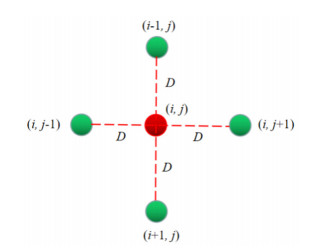









 DownLoad:
DownLoad:
